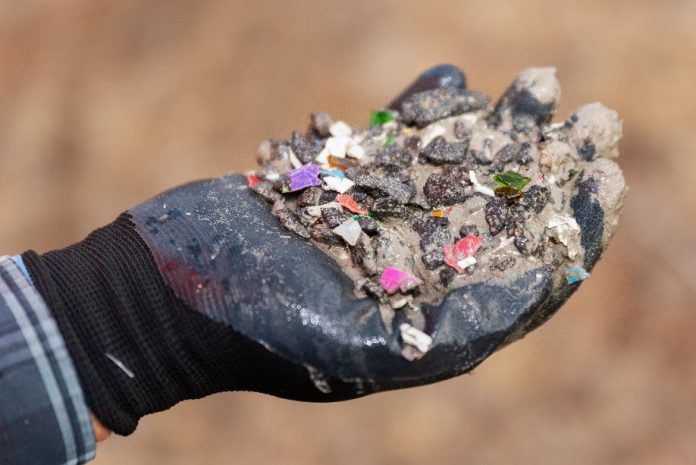
A two-hundred-metre long concrete footpath made with 199,000 recycled glass and plastic bottles has recently been laid in Hoppers Crossing, Melbourne, as part of a project funded through the State Government’s 4.5 million Resource Recovery Market Development Program.
The footpath was constructed with an aggregate formed from a mass of shredded recycled plastics and leftover glass particles that are bound directly into the concrete using a similar technique to traditional aggregate materials.
Developed by Sustainability Victoria and Swinburne University of Technology, this aggregate blend meets the required strength and standard requirements for footpath construction, with scientists to closely monitor the performance of the footpath in Hoppers Crossing to see if, or how, any plastics could potentially be released from the solid bound pavement.
Sustainability Victoria CEO Stan Krpan said information from this demonstration project will be captured and used to inform any future improvements to the product.
“By driving the development of innovative new products and materials made of recycled content like this, and by encouraging the government and local government to buy them we are building a better waste system here in Victoria. A system that diverts materials from landfill, consumes fewer natural resources and reduces carbon emissions,” Mr Krpan added.
“Sustainability Victoria has been thinking circular for a long time. We can create more value from our waste by designing for reuse, keeping products circulating in the economy at their greatest value for as long as possible.
“A circular economy requires commitment from industry, government and the community, which is why we apply the principles to our program design and delivery. In fact, we encourage all Victorians to rethink, recover and reuse products wherever they can.”




















